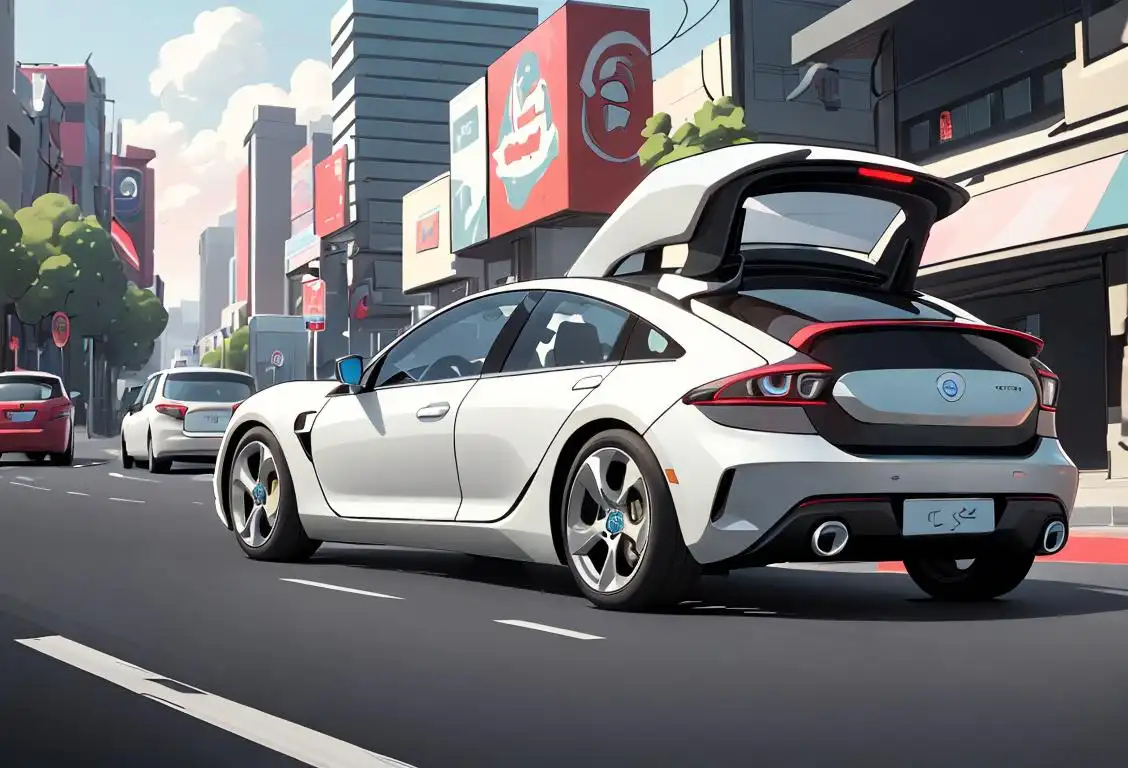National Battery Day

Who knew batteries could be so electrifyingly fascinating? We're sparking up the fun on February 18 with a deep dive into National Battery Day. You don't need a jolt of caffeine on this day – we have plenty of thrilling (and shockingly funny) battery anecdotes. So, sit back, recharge, and let's explore together!
When is Battery Day?
It's national battery day on the 18th February.
The Energizing History of National Battery Day
Take a moment and imagine a world without batteries. No smartphones, no laptops, not even a simple flashlight. Terrifying, isn't it? But don't fret! National Battery Day, commemorated every 18th of February, is here to shed light on these mini power plants and their importance in our modern life.
The Rise in Voltage
Historically, the most mentions for National Battery Day online reached an all-time high on 18th February 2021 with a staggering 2287 mentions. Who knew the humble battery could steal the limelight (or LED spotlight, if you prefer)?
The Power Packed Celebration
The day is usually spent recognising and appreciating the essential role batteries play in our daily lives. From powering our gadgets, to emergency systems, to electric vehicles, today’s batteries are stepping up their game powerfully.
Batteries Unplugged
Dare consider this day as a chance to unplug and take a digital detox? After all, just like a good battery, we also need recharging now and then, don't we?
Conclusion
So, whether you’re a fan of the Duracell Bunny, Energizer Bunny, or just simply someone who can't live without their battery-powered devices, National Battery Day is your opportunity to celebrate these small but mightily important inventions.
History behind the term 'Battery'
1749
The First Discovery
The term 'battery' was first used in 1749 by Benjamin Franklin to describe an array of charged glass plates. Franklin noticed that when he discharged these plates into metal objects, they produced a powerful shock. This discovery led to the development of the Leyden jar, an early form of capacitor that stored electrical energy.
1800
The Voltaic Pile
In 1800, Alessandro Volta invented the Voltaic pile, which comprised alternating layers of zinc and copper discs separated by cloth soaked in saltwater. When connected, this early form of battery produced a stable and continuous flow of electricity. This significant advancement laid the foundation for the modern understanding of electrical energy and marked the birth of practical battery technology.
1859
The Lead-Acid Battery
The lead-acid battery, invented by French physicist Gaston Planté in 1859, was the first rechargeable battery. This technology revolutionized early electrical systems by providing a reliable and convenient source of portable power. Lead-acid batteries were widely used in various applications, including powering automobiles, early electric vehicles, and supporting telecommunications infrastructure.
1901
The Alkaline Battery
In 1901, Thomas Edison patented the alkaline storage battery, a significant breakthrough in battery technology. This type of battery utilized nickel hydroxide and iron electrodes, offering higher energy density and longer operational life compared to previous designs. Alkaline batteries became popular for numerous consumer devices, such as flashlights, radios, and portable electronics, and remain a staple in household power needs today.
1949
The Transistor and Miniaturization
With the invention of the transistor by Bell Labs in 1947, a paradigm shift occurred in battery technology. Transistors enabled the development of compact and portable electronic devices, ranging from early pocket radios to modern smartphones and laptops. The demand for smaller and more efficient batteries rose, leading to advancements in battery chemistry and the introduction of rechargeable lithium-ion batteries.
1991
Lithium-Ion Batteries
The development of lithium-ion batteries, commercialized by Sony in 1991, revolutionized portable electronic devices. Lithium-ion batteries offer high energy density, lightweight construction, and efficient recharging capabilities, making them ideal for modern gadgets. They power everything from smartphones and laptops to electric vehicles, providing longer battery life and enabling the technological advancements of the 21st century.
Did you know?
Did you know the world’s largest battery, in South Australia, has enough capacity to power 30,000 homes for one hour? Now that's electrifying!Tagged
awareness fun technology environment science gadgetsFirst identified
29th January 2016Most mentioned on
18th February 2021Total mentions
2287Other days
Battery Day
Stem Day
Alternative Fuel Vehicle Day
Arbor Day
Dna Day
Tree Planting Day
Manufacturing Day
Public Lands Day
Bike To Work Day
Energy Conservation Day








